If you have got Anubias in your tank, you are likely to wonder at some point about whether or not they need fertilizers. Being a fishkeeper, I understand your concerns, which is why I have come up with this post. Keep reading till the end to get helpful insights!
Pro-Tip: If you’re in a hurry, check out this best fertilizer for Anubias (available on Amazon). It promotes proper growth and covers all nutritional deficiencies.
#1. Do Anubias Need Fertilizers?
As a general rule, Anubias don’t need fertilizers because they are hardy plants that can grow even without fertilizers. However, for optimal growth and to avoid any nutritional deficiency of the plant, we recommend using liquid fertilizers.
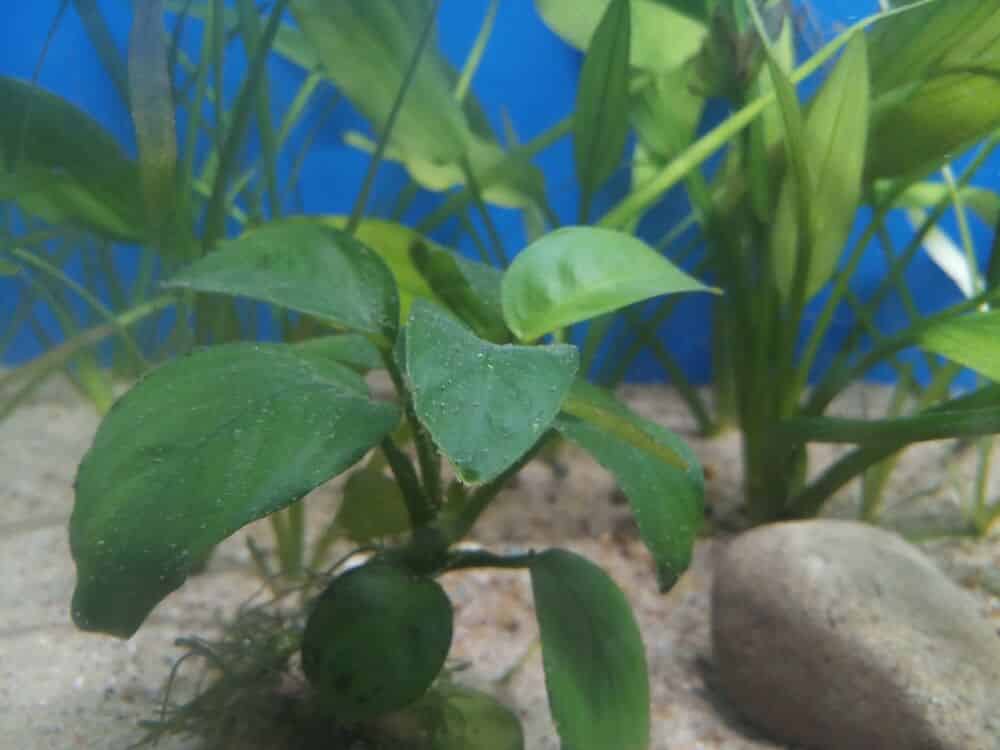
If there was no problem with fertilizers and you could get better growth, why not give them fertilizers?
Unfortunately, using fertilizers is a big challenge, and I’m sure you might have already guessed it.
#2. Challenge Of Using Fertilizers For Anubias – Dealing With ALGAE!
Like plants, algae are also photosynthetic.
When there are enough resources like light and nutrients in the tank ecosystem, you can expect to see more algae growth.
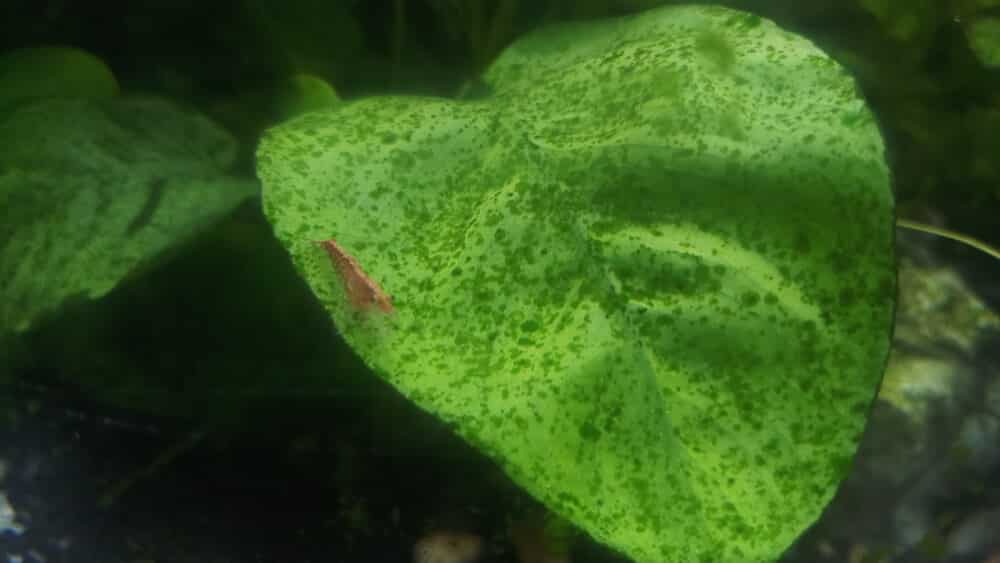
I have already written about the lighting requirements of Anubias here. You can check it out to learn more.
Algae needs nutrients to grow. And by adding fertilizers, we are actually enriching the nutrient content in the tank ecosystem.
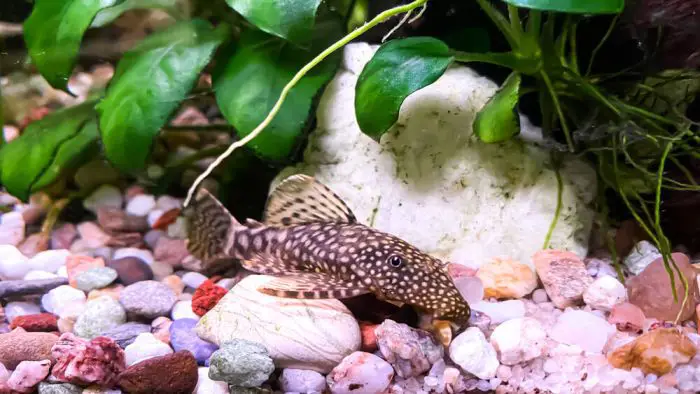
Anubias are usually slow-growing plants. And they are quite prone to getting algae infestations.
So by adding the fertilizers, we are only increasing the chances of algal growth.
But wait, why do we need to fear algae so much? If you have just started this hobby, you could wonder about it.
Well, the answer lies in the fact that algae can smother aquarium plants. They can block the adequate light, nutrients, and CO2 passing over the plant’s leaves.
When there is extreme algae growth on the leaves, it can lead to the end of life of aquarium plants.
In addition, with some algae, it can be challenging to get rid of them.
So long story short, it’s better to prevent the nuisance of dealing with algae problems as much as possible.
And that’s why it’s essential to keep a check on excess resources in the tank that allows algae to thrive.
#3. Can Anubias Grow Without Fertilizers?
In general, Anubias can grow without fertilizers. Anubias species are usually pretty hardy and slow-growing plants. But adding fertilizers can ensure their better growth in the tank.
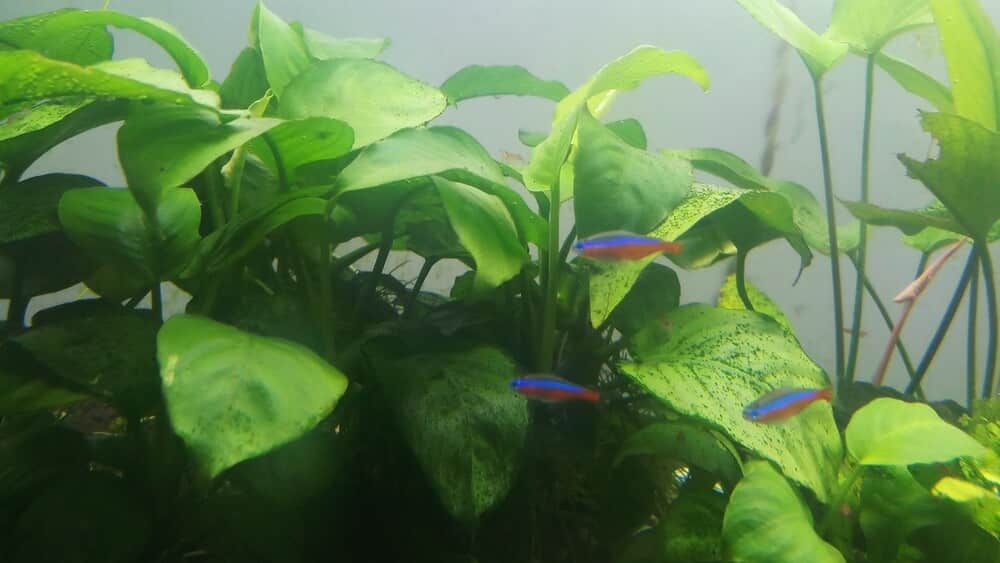
Anubias are epiphytic plants that have rhizomes.
Along with Java Ferns, Anubias are also included in the list of popular rhizome plants of the aquarium.
And rhizome is a stem of the Anubias. From the upper portion of the rhizome, leaves grow out. While, from the downward part, the root grows.
Typically, your Anubias are slow-growing plants.
The nutrients it gets from the fish waste usually should be enough to keep it alive and make it survive. But note my words. I say survive and not thrive or grow well.
#4. What Nutrients Does Anubias Need?
Like all plants, Anubias do need nutrients.
The fish waste in the tank does help in fulfilling the nutrient requirement of Anubias up to some extent. But like all plants, it’s not a great idea if you are just relying only on that.
Plants require several macro and micro nutrients for their proper growth.
| Nutrient Type: | Macro Nutrients: | Micro Nutrients: |
| Use: | Plants use them in large quantities. | Plants use them in small quantities. |
| Examples: | Nitrogen, Phosphorus, Sulfur, Calcium, Magnesium, Potassium. | Iron, Boron, Chlorine, Manganese, Copper, Zinc, Molybdenum. |
Did you know?
Macro Nutrients + Carbon ~ 96% Plant’s mass
A lot of fundamental blocks for plants come from air/water, oxygen, and hydrogen. The rest, for aquatic plants, come from the water (and from the soil, especially for the terrestrial plants).
And even though plants need micronutrients in smaller amounts, they do need them as well. Otherwise, the plant will start showing nutrient deficiency.
Fish waste typically only supplies a source of nitrogen and phosphates for plants. But they don’t usually offer an adequate amount of potassium and magnesium.
Moreover, there’s hardly any known fish that would ever excrete chelated iron as waste.
And mind you, plants that lack iron can show yellowing or paleness on their newest leaves. Check out my dedicated article on why anubias turn yellow.
So adding adequate fertilizers becomes crucial, especially when you start seeing any particular nutrient deficiency in your anubias.
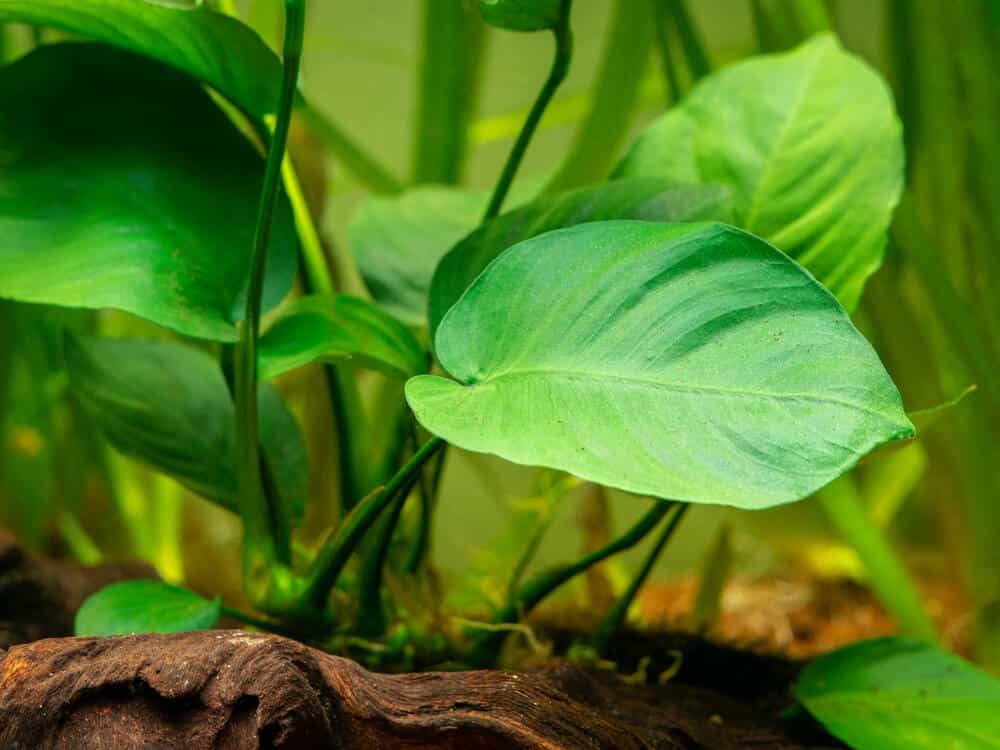
Furthermore, you never know whether or not your fish waste is enough to provide the essential nutrients. Maybe you don’t have enough bioload (bioload simply means all the waste in your aquarium water) to support Anubias.
#5. When Do You Need To Give Fertilizers To Anubias?
- When you want to ensure optimal growth of Anubias.
- When you have a low bioload in the tank to provide enough nutrients for Anubias.
- When Anubias are showing particular nutrient deficiency symptoms.
#6. What Fertilizers Does Anubias Need?
Anubias can take nutrients from water columns, so you can feed them a good quality liquid fertilizer.
It is the nature of rhizome plants like Anubias to absorb nutrients from the water column. And so, if you are wondering whether or not they need root tab fertilizers, the answer is No! A good quality liquid fertilizer will do.
#7. What Is The Best Fertilizer For Anubias?
I would recommend getting the Seachem Flourish for your Anubias.
Seachem Flourish is a liquid aquarium fertilizer that you can easily get at most stores. It is pretty handy and beginner friendly considering the light amount of nutrients it contains.
Search Flourish is usually regarded best for low-light and low-tech planted tanks. And Anubias tend to do well under low light conditions. So Seachem Flourish is the best fit as a fertilizer for your Anubias.
Final Thoughts
In short, Anubias can survive without fertilizers. But to ensure optimal growth, it is good to provide them with liquid fertilizer.
Yes, algae can be a challenge when we consider fertilizer. But you can take preventive measures. For instance, try adding a few Otocinclus Catfish or Siamese Algae eaters in your tank!
Moreover, you can also use other aquatic plants to prevent algae growth in your aquarium. Usually, well-planted tanks don’t tend to have an algae issue, and that’s because the plants starve out the algae by removing nutrients from the water.
So you can use fast-growing stem plants like hornworts and wisteria that can effectively use the nutrients and thus help you deal with the algae problem.
That’s it! I hope this guide has answered all your questions and doubts. If you found this post helpful, please share it with others and pin or bookmark it for later reference purposes. Thanks, and see you again 🙂
Read Next: Why Are Anubias So Expensive?
Hi! I’m Praveen Ghoshal, the founder of eFishkeeping.com. Inspired by my Dad, I got interested in fishkeeping when I was a kid. Since then, I have been involved with this hobby. Currently, I have 3 fish tanks at our home, and I enjoy this hobby with my full family. Read more about me here.










